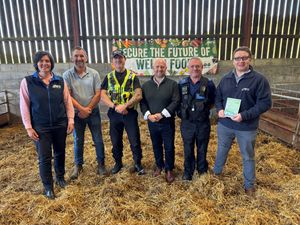Precision potato farming under the 'SPot-light'
With potato growers facing constant challenges to increase their marketable crop, the industry sees an important new project getting under way, writes Sophie Lock, of the AHDB Potato Council.
The first Strategic Potato Farm – SPot Farm for short – has been created at a farm owned and managed by forward-thinking grower James Daw, near Rugeley. This exciting new project aims to demonstrate to potato growers the benefits of levy-funded research and development for practical and commercial farm environments.
Now live, SPot Farm is a highly collaborative project funded by AHDB Potato Council. It will be run in partnership with James, the grower, AHDB Potato Council (GB's potato levy board), NIAB-CUF (research partner) and Tame Valley Potato Agronomy (the farm's regular agronomist), and aims to show how growers can maximise production efficiency alongside environmental sensitivity and efficient use of resources.
As well as wheat, oilseed rape, oats and spring beans, James grows spuds for processing. James will use the latest precision farming methods to identify and eliminate the variables in potato growing, such as tuber sizes too big or too small to sell, in order to boost marketable yields and maximise consumption.
GPS yield recording, or "mapping", has been popular in new combine machinery for a while. Precision agriculture, enabled by the advent of GPS, allows the farmer to locate their precise position in a field allowing for the creation of maps of as many variables as can be measured (like crop yield, terrain, organic matter content, moisture levels, nitrogen levels, pH, and so on).
James has been mapping the output of the crops he grows for a number of years to precisely identify costly inputs such as seed and fertiliser.
As the potato crop behaves in a very different way to the other crops he grows, James needed his own "maps" to understand any variations across his fields.
Growers can visit SPot Farm for themselves on July 23 at James' farm.





